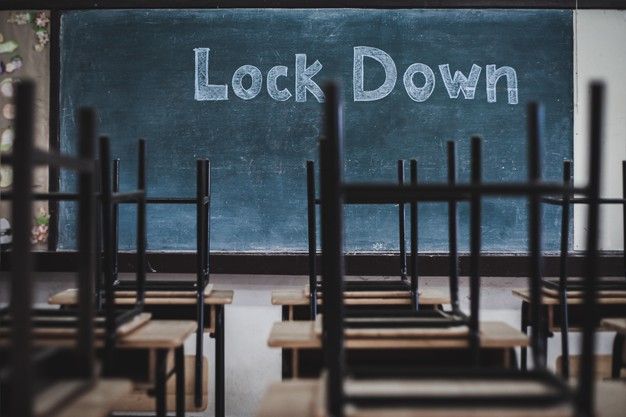The pandemic and learning crisis

The world and education is currently witnessing a major event that may threaten education with a massive crisis, perhaps the most serious in our contemporary time. As of March, 2020, the COVID-19 pandemic has left more than 1.6 billion children and young people out of school in 161 countries, nearly 80% of students enrolled in school globally. This came at a time when we are already experiencing a global educational crisis, as there are many students in schools, but they are not receiving the basic skills they need in working life. The World Bank’s indicator of “learning poverty” – or the proportion of students who cannot read or understand at the age of 10 – shows that the proportion of these children in low- and middle-income countries prior to the outbreak of the virus was 53%. If we do not act, this pandemic may worsen that outcome.
But what are the direct effects on children and youth that are of concern to us at this stage of the crisis?
- Learning losses.
- Increased drop-out rates.
- Inequality among children in educational experience. What is more, the inequality in educational systems that most countries suffer from and these negative effects will undoubtedly affect poor children more than others; As if misfortunes do not come to them alone
Learning. A late start or interruption of the school year (depending on where you live in the northern or southern hemisphere) will completely disrupt the lives of many children, their parents, and their teachers. There is much that can be done to at least limit these effects, through distance learning strategies. Richer countries are better prepared to transition to online learning strategies, albeit with a great deal of effort and challenges for teachers and parents. But the situation in both middle-income and poorer countries is not the same
And if we don’t act appropriately, this inequality of opportunity – which is already appalling and unacceptable – will only get worse. Many poor children do not have a study desk, or books, in addition to the difficulty of connecting to the Internet or not having laptops at home, but some of them do not find any support from their parents as hoped, while others enjoy all of the above. Therefore, we must avoid widening these gaps in opportunity – or reducing them as much as possible – and avoid increasing negative impacts on the learning of poor children.
Fortunately, we are seeing a great deal of creativity in many countries. Many ministries of education are already justifiably concerned about relying solely on Internet-based strategies, and thus only the children of better-off families can reap the benefits. The appropriate strategy for the majority of countries is to use all possible means that the existing infrastructure provides for service delivery.
Online tools can be used to make lesson plans, videos, tutorials, and other resources available to some students, and probably most teachers. However, blogs, podcasts, and other resources that consume less data should also be used. It should work with telecom companies to implement policies that exempt users from fees, to facilitate downloading of learning materials to smart phones, which are often carried by the most students.
Radio and television are also tools that should not be underestimated. We can take advantage of the features provided by social networks, such as WhatsApp or SMS, to enable agencies of education to communicate effectively with parents and teachers, providing them with guidelines, instructions and structure of the learning process, using content provided on radio or television. Distance learning is not limited to the use of the Internet only, but it involves learning that depends on a variety of media that ensure that it reaches the largest possible number of students today.
Keep the enthusiasm involved. It is very important to maintain the enthusiasm of children to participate, especially young people at the secondary level. Drop-out rates are still very high in many communities, and their prolonged interruption to education is likely to increase them. The student not only goes to school to learn mathematics and science, but also goes to establish social relations and deal with his peers learn how to be a citizen, and develop his social skills.
It is therefore essential to maintain contact with the school by any means necessary. For all students, it is a time to develop social and emotional skills, and to learn more about how citizens can contribute to the development of their societies. Although the role of parents and the family is always very important, it is even more important in that regard. Therefore, a great deal of help from the ministries of education, through the mass media, must be directed to parents as well. They should take advantage of messages sent via radio, television and SMS to provide them with tips and advice that will help them to provide better support for their children.
All education systems have one task ahead of them, which is to overcome the learning crisis we are witnessing, and to tackle the pandemic that we are all facing. The challenge today is to reduce the negative effects of this pandemic on learning and school education as much as possible, and to benefit from this experience to return to the path of improving learning at a faster pace. As education systems contemplate responding to this crisis, they must also think about how to get out of it stronger than before, with a renewed sense of responsibility on the part of all actors in it, and with a clear understanding of the urgency of bridging the gaps in educational opportunities, and ensuring that all children have access to education-equal opportunities for a good education.
.



